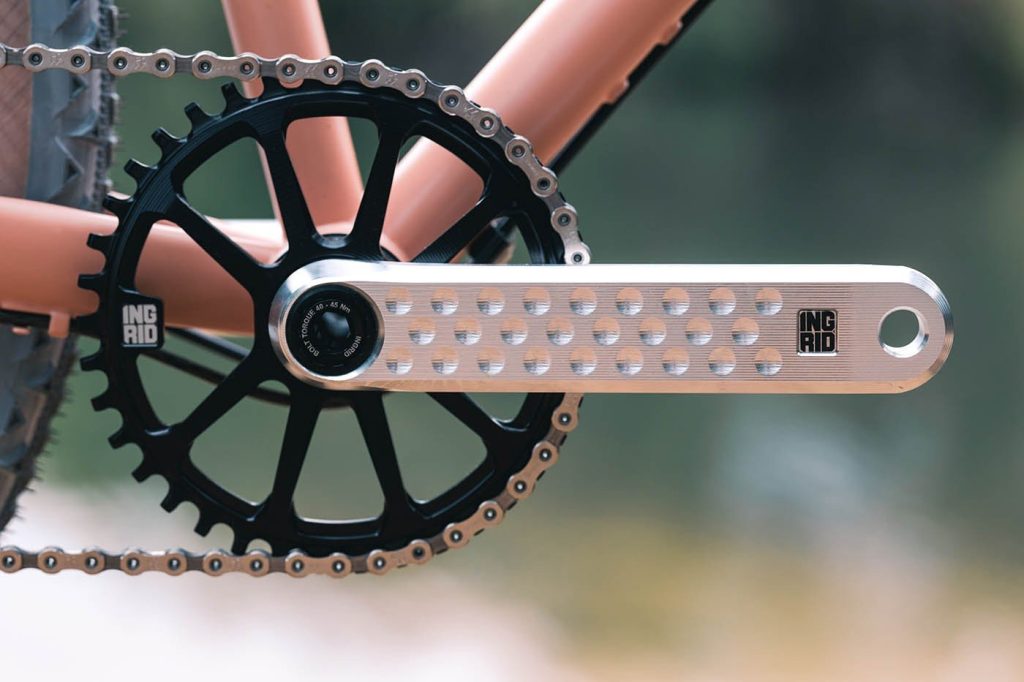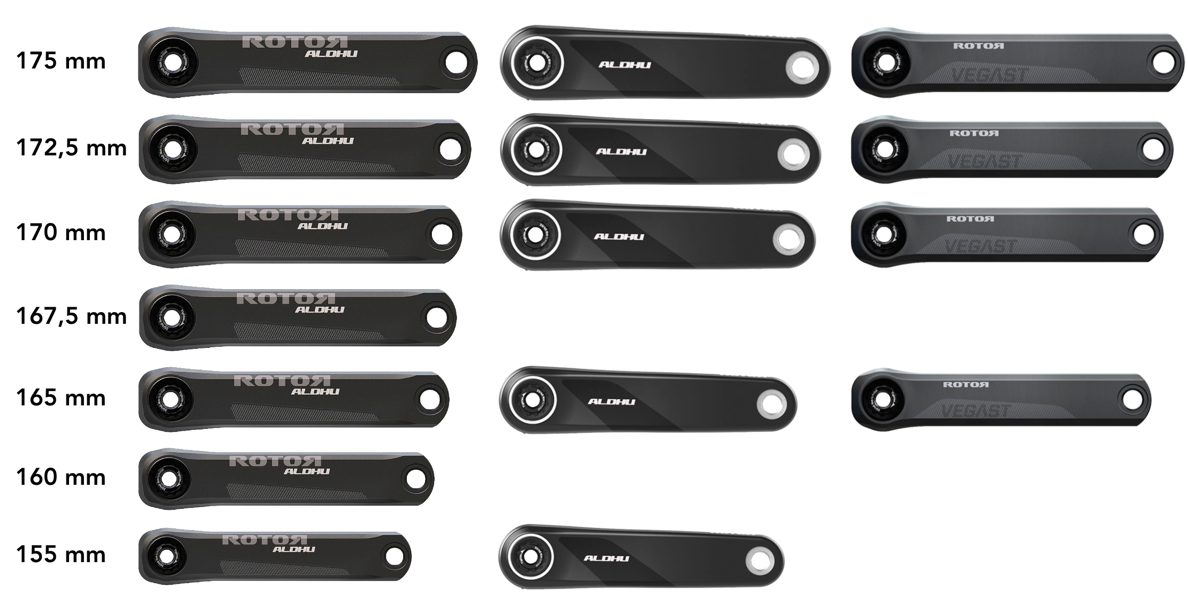Obviously, crank length affects the torque and then the output power. The wrong crank length also causes cycling fatigue and sports impairment. This has led many cyclists to ask, what crank length is the best? Are shorter cranks always better?
Most commonly seen crank length: 170 mm – 175 mm
The mainstream crank length in the current bike parts market is between 170 mm and 175 mm. Most crank arm manufacturers will use 2.5 mm as the length interval between two adjacent series of products, such as 167.5 mm, 170 mm, 172.5 mm, 175 mm, 177.5 mm and 180 mm. A few brands offer 165 mm crank arms for short cycling enthusiasts. Overall, a crank arm of 165 mm in length is relatively rare. Most cyclists choose three-size crank arms: 170 mm, 172.5 mm and 175 mm.

In terms of sports health, for most people, a crank arm longer than 175 mm leads to excessive knee flexion angles (over 115 degrees), significantly increasing the pressure on the knee during cycling. This increases the risk of a knee injury. If the rider uses a more extended crank arm, the foot must be lifted higher during leg lifting. This can also increase energy expenditure and make it difficult for riders to maintain a low riding position. A long crank arm can also cause the legs to hit the body while moving up, thus damaging the riding experience. As a result, many riders will not choose a crank arm over 175 mm in length.
A shorter crank arm started to prevail
In his recent race, driver Pogacar replaced his crank arm with a super-short 165 mm one and won the championship. This has led to more people focusing on the shorter cranks, which can increase output. As a result, many cycling enthusiasts have begun to try a short 167.5 mm crank arm.

Riders believe a shorter crank arm improves cadence, increases the gap between the pedal and the ground when corners, and helps riders reduce the possibility of a knee bump into the chest or handlebars. Therefore, many people have recently suggested that when choosing a crank arm, please try to choose a shorter one. It has a higher cadence, while a high cadence can give you higher output power. That’s why many riders currently want to upgrade to the ultra-short crank arm.
Then, the problem becomes that the more extended crank arm provides more torque and lower cadence, and the shorter crank arm provides a little less torque but a more significant cadence. The final output power depends on the product of the torque and the cadence. So which crank arm can provide higher output power output and power output efficiency?
Does shorter cranks output more power?
Studies have used multiple crank lengths like 120 mm, 145 mm, 170 mm, 195 mm and 220 mm, and the experimental results show that the power output efficiency of crank arms of lengths 120 mm and 220 mm is significantly lower than those of other crank lengths. The remaining shorter cranks provide little difference between the output power. Moreover, of the three crank arms of 145 mm, 170 mm and 195 mm, the power output efficiency of the 170 mm crank arm is the highest, but it is only about three per cent higher than the total average of the crank arms of these five lengths.
SUMLON Can’t tell you if a 167.5-mm crank arm can produce more output power than a crank arm at 170 mm. However, we can determine that the effect of the crank arm’s length on output power is minimal. The shorter crank arm gives you a less significant increase in output power.
Suggestion on crank length and shorter cranks
Even crank arms shorter than 170mm in length are uncommon in professional competitions. SUMLON Thinks the average cyclist should choose a crank arm between 170 and 175 mm. The short crank arm does improve power output efficiency in a flat cruise, but this requires strong thigh support.
The advice from the professional team is that the short crank arm does improve the efficiency of the power output in the flat cruise state, but it needs a solid thigh to support the power output. The shorter crank arm still needs to be discovered in the current professional competitions. During the rider stampede, the shorter the crank arm and the rider output, the greater the force. You don’t have as muscular thighs as a professional athlete, and you don’t have the medical team and coaching team equipped with a professional cycling team to conduct data analysis for you;
SUMLON doesn’t think even if you are a senior player to try a crank arm shorter than 170 mm. I always feel that in the amateur group, the training of their own ability is far greater than the equipment. Even if your muscular thighs adapt you to a shorter crank arm, even if a shorter crank arm really threatens to improve power output efficiency by 2-3%, and even if you don’t care about the hundreds of dollars it takes to update a short crank arm, we feel that 1-2 weeks of training is more extensive and more cost-effective.
BTW, some riders’ friends will think that different crank arms can improve comfort, which is a good reason for you to replace different lengths of crank arms rather than increase the power output. If your thighs are strong enough, a shorter crank arm also helps avoid sports injuries.




